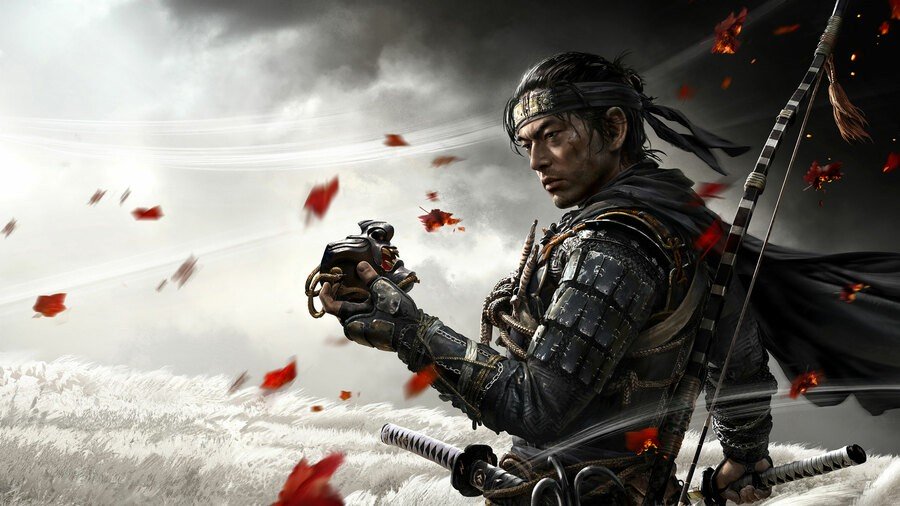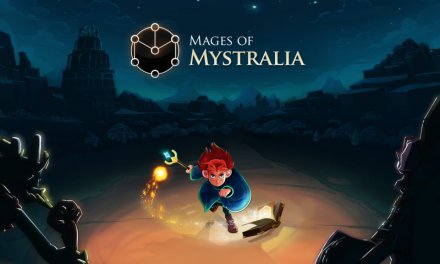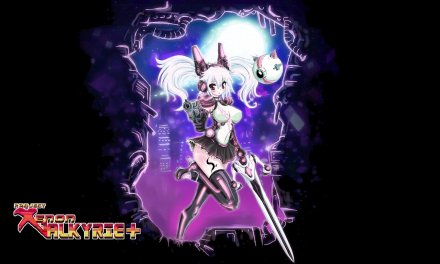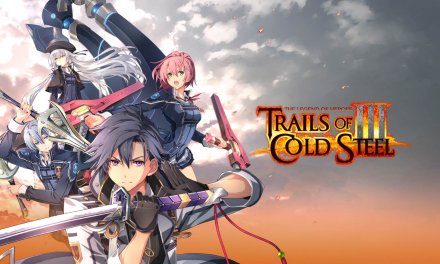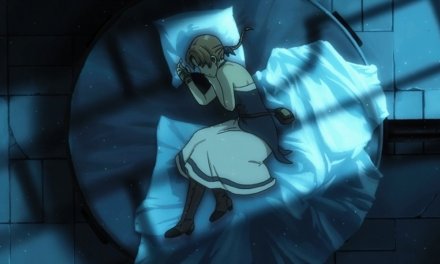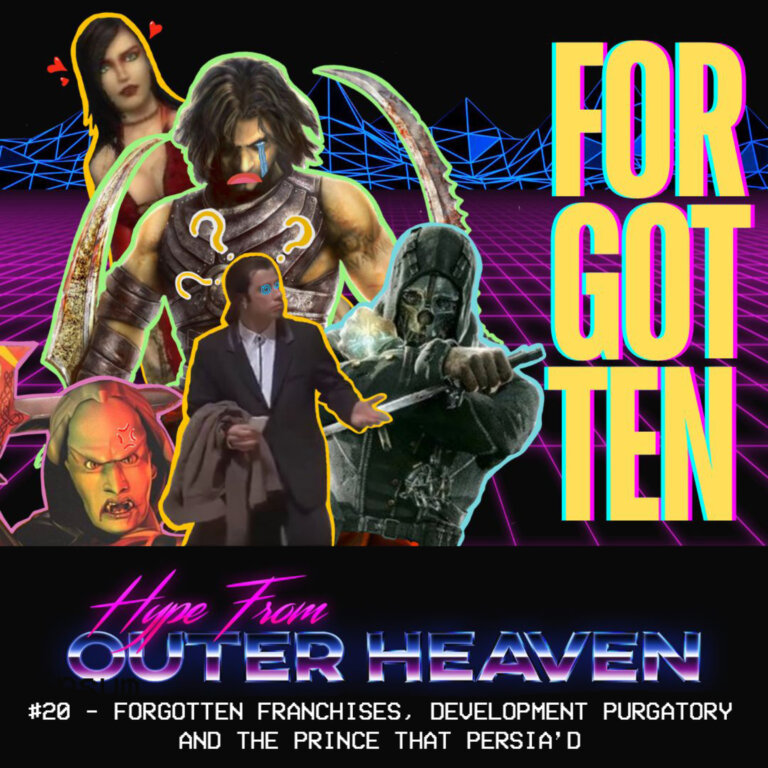Sucker Punch and Sony Interactive Entertainment have done it, they’ve finally dropped a Samurai game. As is common with most big first party exclusives Ghost of Tsushima was announced many moons ago, so long ago in fact that my hype had almost died, but we have extra hype here at GameHype HQ specifically for these drawn out release dates.
Right off of the bat I’m getting this out of the way ‘It’s a samurai Assassins Creed’, do they share similarities yes, do they also differ in quality to such a degree that lumping Ghost of Tsushima in with that bloated corpse of a franchise undermines the work and effort of Sucker Punch, by the Kami yes!
Ghost of Tsushima is a love letter you old Samurai cinema, there’s even and option to play the game in black and white respectfully called ‘Kurosawa Mode’. For many of you this won’t need explaining but for those of us not as well versed in Samurai pop culture, Kurosawa mode is named after the legendary Japanese director and makes the game black and white with a grainy cinema texture over the top. It’s bloody fantastic; you’re able to switch this on and off at will from the options menu, something I did continually for the first few hours of the game. Eventually I settled for Kurosawa during action and full colour for exploration, this meant I had a great balance between the game looking “cool” and not missing out on the beautifully designed Flora and Fauna of Tsushima. As well as this visual option you’re also asked to choose your audio preferences. In keeping with the Japanese Cinema vibe I opted to play the game with Japanese Dialogue and English subs. The invading mongols obviously don’t speak Japanese (for the most part), the Mongolian Language isn’t translated adding even more to the feeling of an invading alien culture.
This review is going to be light on plot spoilers as firstly, they are called ‘Spoilers’ for a reason and secondly, at its core Ghost of Tsushima is your pretty standard Samurai revenge story. The Mongolians invade the island of Tsushima with the aim of using it as a beachhead to conquer the rest of Japan. The islands noble and most honourable Samurai meet this invading horde with their usual honour, however the Mongolians and their leader Khotun Khan care not for honour and the Samurai are slaughtered almost to a man.
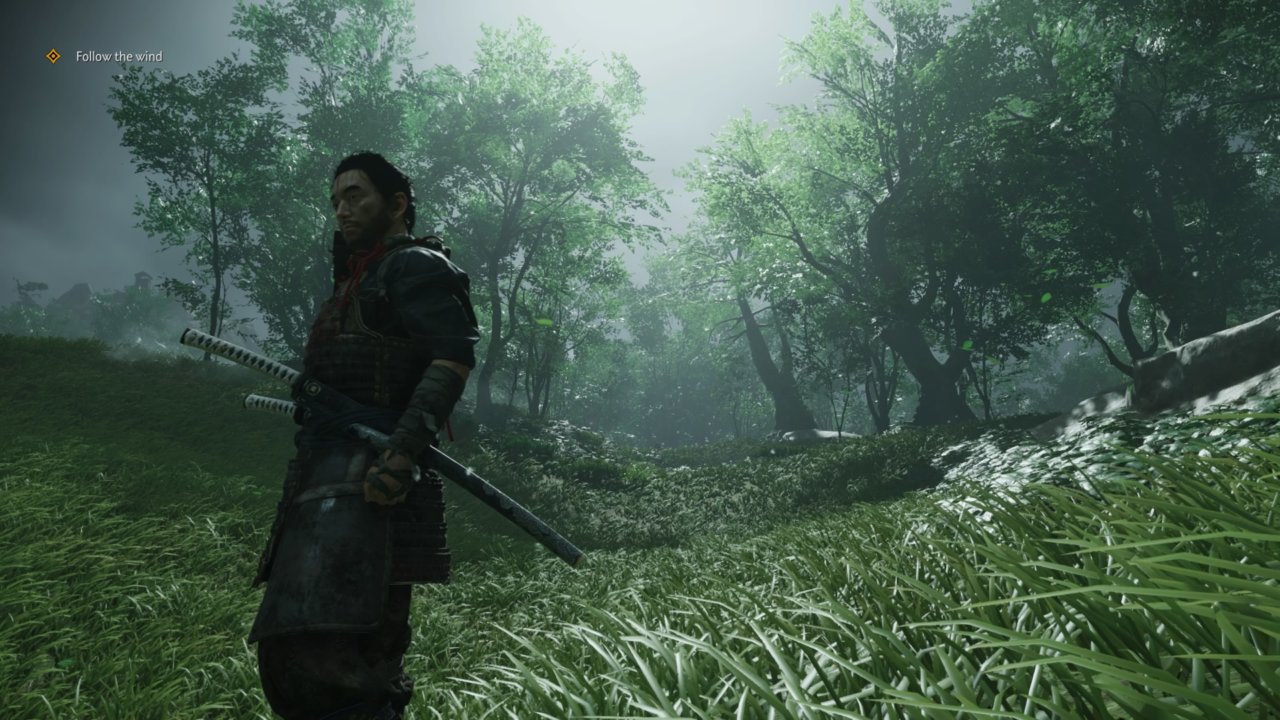
Jin is presumed dead and left on the battlefield, only to awaken after being rescued and nursed back to health by Yuna, a honourless thief, with her own motives for this sudden magnanimous act.
I don’t call the main plot ‘standard’ to undermine the story at all but rather to point out that the true story of Ghost of Tsushima is the journey you will go on as Jin Sakai. Jin struggles to adhere to the Samurai code, Samurai honour is predictable and the cunning Khotun has already exploited this at heavy cost to Jin and his people, meaning that other less honourable tactics may be called for. What is more important to Jin, saving his people or living by the code of honour that is the very basis of his entire culture?
In this regard Ghost of Tsushima evokes memories of Red Dead Redemption 2, in the sense that it’s a character struggling to come to terms with a changing world and their place within it.
Now, this struggle actually comes into play within Ghost of Tsushima’s gameplay. Immediately the game sets out the importance of honour and the detestable lack of it the Mongolians display. Their brutish savagery perfectly mirrors the stoic respectful will of the Samurai.
I’ve always preferred Ninja to Samurai, sneaking about and silently dispatching an foe, oblivious to their demise until my blade drags that final breath from their lungs…but so effectively is the importance of honour displayed in the opening cutscene that I immediately disregarded any notion of striking from the shadows, each of these barbarous swines would die having seen the contemptuous disgust in my eyes.
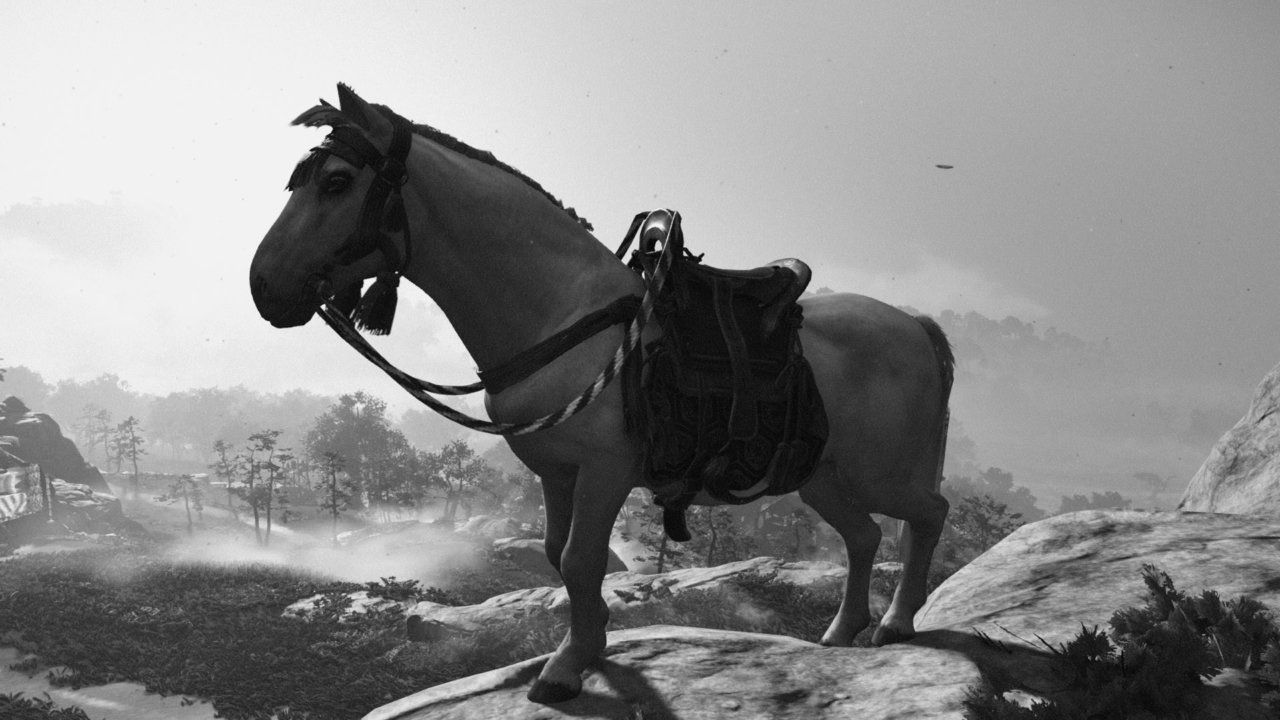
The game forces you at times to dishonour yourself, while it’s needed for Jin’s character arc it felt restrictive to me, I wanted to uphold the Samuari code of honour, the narrative is at times written to justify such actions, for example, if the mongols spot you they will kill all their prisoners so you have to perform stealth kills. I’d of preferred a non-leatal stealth option, or the ability to out manuever my foes until I had saved the prisoners and could then face my foes honestly. If I’d wanted to skulk in shadows and strike unseen I’d just go back and play some classic Tenchu.
The island of Tsushima is beautifully rendered and dozens of times I’ve stopped to just stare in awe at the beauty on the screen. The isle of Tsushima is beautiful and surprisingly varied, from the bamboo forests, to coast lines and woodland paths littered with cherry blossom. I can’t praise the world anymore from a visual perspective. The adage that a picture is worth a thousand words is one I’ve often rebelled against having a writers ego an all, but Ghost of Tsushima proves the cliche true.
Not that all is perfect within the world of Tsushima, within being the keyword, while it’s beautiful there isn’t a whole lot of merit to do in it. Yes, your game-map will be littered in icons and markers but all the icons pretty much boil don’t to, follow that animal or kill those bad folks. Completing these little quests reward you with either skill points (obviously used to make Jin more capable) or some form of in-game currency for the absolutely crazy amount on customisation available for Jins armour and weapons. I’ll be honest, I don’t care about cosmetic changes at all, you can upgrade your weapons to be more damaging and effective. Also different armour sets offer different gameplay advantages, such as making you a better archer or allowing you to sneak around faster. So while collecting flowers to dye my outfits seemed pointless to me, collect metals and wood to improve my martial ability kept me chasing animals anyway, the dull moments occasionally broken up by random encounters with Monguls or criminals.
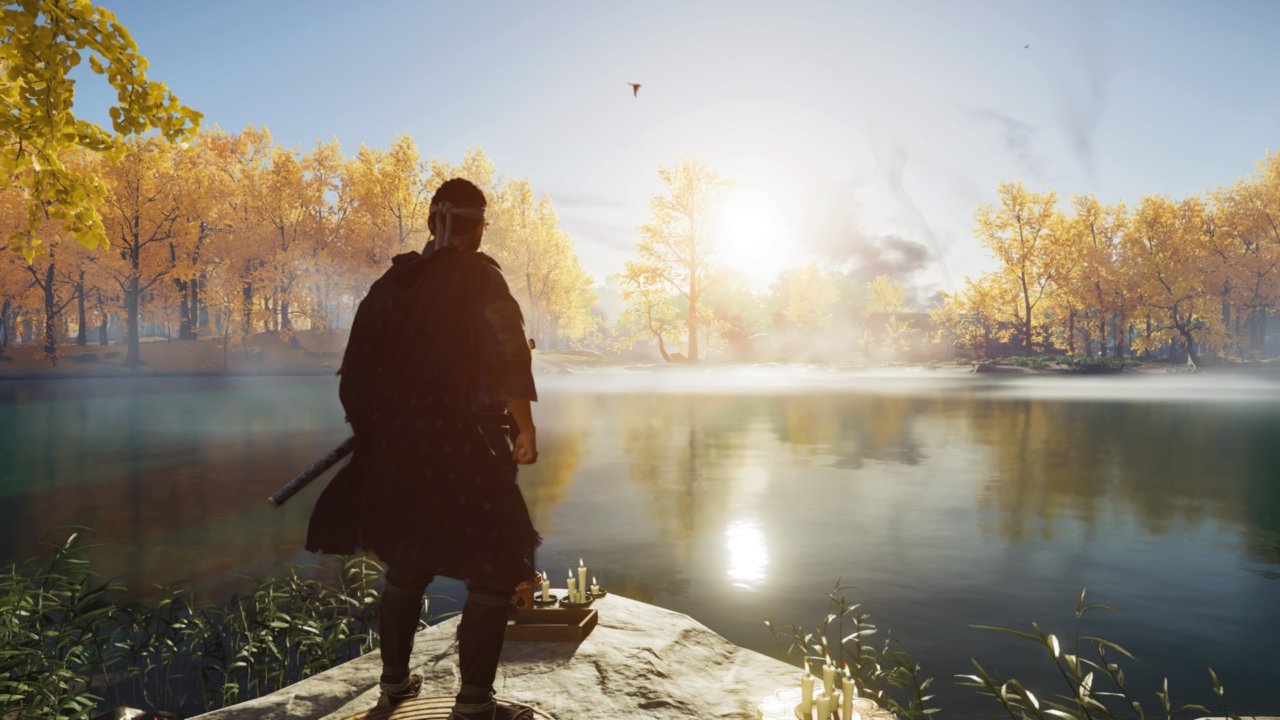
Missions basically fall into two categories, main quests and what Ghost of Tsushima calls tales. Main quests obviously progress the plot but the tales are what I had the most fun doing. They are basically characterful side quests that give you a broader sense of what life is like on Tsushima during the invasion. Some even lead to power samurai techniques thought lost to the ages. The one downside to these tales is that they do serve to highlight how dull the ‘mini-missions’ really are. After facing down a Ronin in a duelling circle while a thunderstorm rages around you being followed by chasing a bird up a mountain is a tad jarring.
Interaction with in world items is messy and on several occasions I had to reload a checkpoint so I could actually honour a shrine or talk to an NPC, it didn’t happen often but its frustrating when the rest of the game shows so much polish.
Speaking of polish, and lets face it, the real reason you want to play as a samurai is the combat. Combat is deceptively simply at first, while Sucker punch allow you settle into Jins sandals, however it’s not long before Sucker Punch live up to their name and you’re getting slapped about by a variety of foes wielding an selection of weapons, each foe and weapon must me measured and faced with the upmost care. Often I still find myself getting cocky or flustered and spamming an attack button only to get impaled on the end of a spear and suffer for my hubris. Jin has access to 4 combat stances, each stance is designed to be used against certain foes, my favourite being the Water stance, it’s meant to be used against foes wielding a shield, it consists of large wide attacks capable of knocking an opponents shield out of the way and staggering the foe. It also looks graceful and effortless, trust me, a few hours in and everytime you manage to dispatch a gaggle of foes with grace and economy of movement you’ll feel every bit like the Samurai bad ass you’ve so longed to play as.
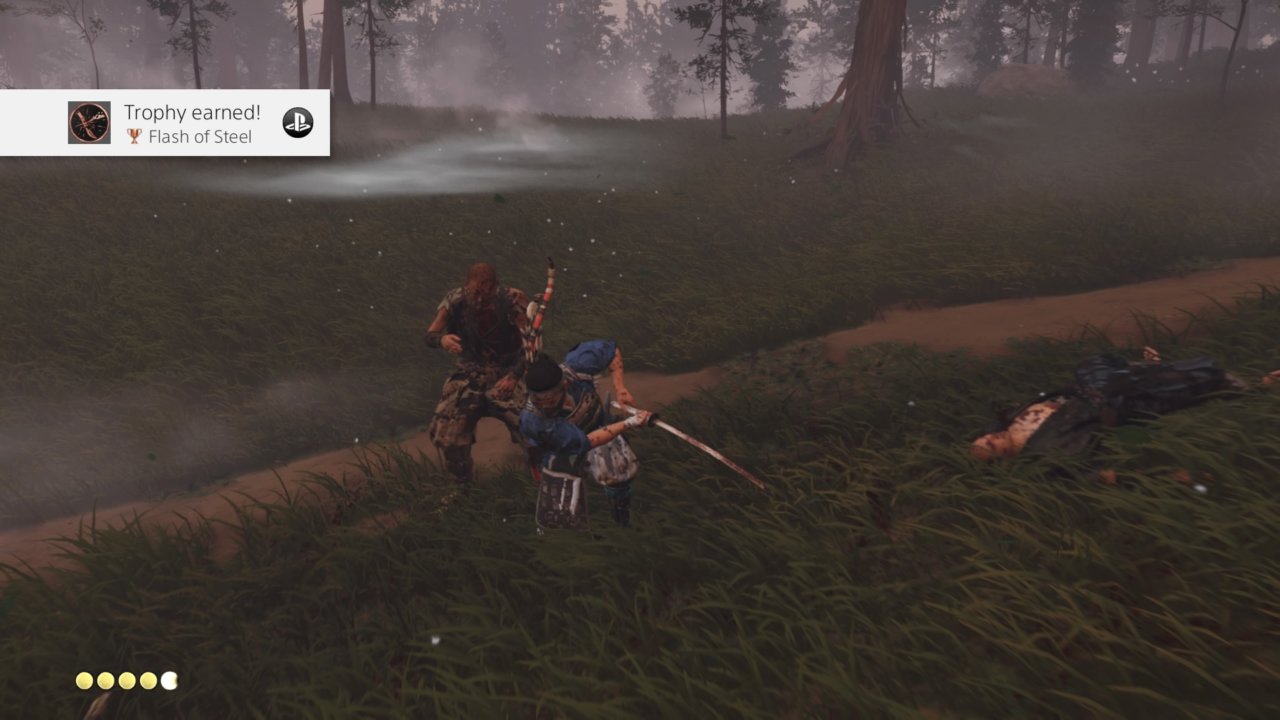
As well as his Samurai skills Jin has a bow and a selection of ‘Ghost’ weapons, they all have a fairly ninja slant to them, smoke bombs and Kunai among them, they are mostly used for crowd control, many many times has a well placed Kunai dispatched a foe mid swing thus saving my life. This brings us on to ‘Renown’ it’s essentially an energy bar that has multiple uses, from health recovery to using special moves to devastate those foolish enough to cross swords with the Ghost of Tsushima. Renown is replenished by defeating foes, one of the best ways to refill your renown is to enter a Stand-off. Remember what I said about the game being a love letter to Samurai movies? Nowhere is this more evident than Standoffs, as you encounter enemies in the wilds of Tsushima you’ll be given the option to challenge said enemies to send their best warrior forward to face you one on one. You must hold the heavy attack button and your nerve as you stand opposite a fool who overestimates his skills, timing is crucial, perfect this and you’ll kill said fool in one dramatic stroke as he stands on his feet, arterial spray dramatically tracing the path of your blade before he falls to the ground dead in defeat. Not only are they great fun, they increase in difficulty with enemies feigning attacks hoping to catch you off guard, and most importantly they are honourable.
I can’t recommend Ghost of Tsushima enough, it’ every bit the Samurai fantasy you’ve always wanted to live out. Is it an historically accurate depiction of the Samurai, no, it’s very much an idealised version, but again, that’s the version we’ve longed to play.
A code from Ghost of Tsushima was provided by PlayStation UK.

